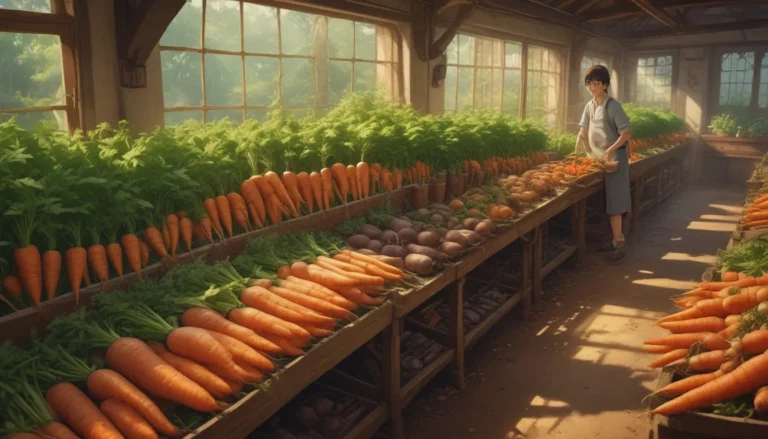Growing Birdhouse Gourds: Your Complete Guide

Birdhouse gourds are a wonderful addition to any garden, offering a unique and creative way to attract birds to your yard. With their hard shells and distinctive shapes, these gourds are perfect for crafting decorative birdhouses that double as functional homes for our feathered friends. Let’s dive into the world of birdhouse gourds and learn how you can plant, grow, and harvest these fascinating plants right in your backyard.
The Fascinating World of Birdhouse Gourds
Birdhouse gourds, scientifically known as Lagenaria siceraria, belong to the Cucurbitaceae family, which includes cucumbers, pumpkins, and melons. These hard-shelled gourds are not edible but are valued for their versatility in crafting decorative items, including birdhouses.
Cultivation and History of Birdhouse Gourds
Lagenaria siceraria has a long growing season of up to 180 days and thrives in USDA Hardiness Zones 2 to 11. The vines of these gourds can reach lengths of up to 16 feet and can be grown on the ground, along fences, over arbors, or up trellises.
The plant’s history dates back thousands of years, making it one of the earliest domesticated crops in human history. With its origins in Africa and a rich tradition in Asia and the Americas, L. siceraria has been used for various purposes, from food containers to musical instruments in religious ceremonies.
Propagation of Birdhouse Gourds
To grow your own birdhouse gourds, start with fresh seeds from a reputable source. Soak the seeds overnight in lukewarm water and plant them in biodegradable peat pots or egg carton cells indoors before the last spring frost. When the seedlings have two sets of true leaves, acclimate them to the outdoors and transplant them into well-draining, organically rich soil.
How to Grow Birdhouse Gourds
Whether you start your seeds indoors or directly sow them in the garden, plant them after the danger of frost has passed. Choose a sunny location with organically rich soil that drains well. Water the plants consistently, avoid overwatering, and provide support for the vines as they grow.
Growing Tips for Birdhouse Gourds
- Start seeds indoors for a head start.
- Use biodegradable pots to avoid disturbing seedling roots.
- Mound the soil to optimize drainage.
- Place seeds pointing downward to prevent rotting.
- Add compost for nutrition but avoid nitrogen-rich fertilizers.
- Provide support and protect developing gourds from pests and disease.
Pruning and Maintenance of Birdhouse Gourds
Prune the main vine when it reaches 10 feet to encourage lateral branching. Remove damaged plant tissue and keep the garden free of weeds to prevent pests and disease. Water the plants in the morning, avoid midday watering to reduce mold growth, and maintain proper airflow in the garden.
Where to Buy Birdhouse Gourd Seeds
Choose reputable sources for birdhouse gourd seeds, such as Eden Brothers or Botanical Interests, to ensure quality and variety. Select seeds based on the desired gourd shape and size for your crafting projects.
Managing Pests and Disease in Birdhouse Gourds
Practice good garden hygiene to prevent pests and disease. Monitor your plants regularly for common pests like aphids and cucumber beetles, and be on the lookout for diseases like powdery mildew and bacterial wilt. Use disease-resistant seeds and follow best practices to minimize damage to your gourd crop.
Harvesting and Drying Birdhouse Gourds
Harvest your gourds when the foliage wilts and the vines begin to dry out. Leave a generous stem attached to each fruit for optimal maturity. Dry the gourds in a well-ventilated area, suspending them on twine or racks until they are lightweight and hollow. Use dried gourds for crafting birdhouses and other decorative items.
Best Uses of Birdhouse Gourds
Birdhouse gourds are a versatile addition to any garden, offering aesthetic appeal and functional benefits. Grow them for their sprawling vines, fragrant flowers, and heavy fruit that can be used in crafting projects for the whole family. Explore companion planting options and creative ways to incorporate gourds into your garden design.
Quick Reference Growing Guide for Birdhouse Gourds
- Plant Type: Annual vegetable, primarily ornamental
- Flower/Foliage Color: White/green
- Native to: Asia, Africa
- Hardiness (USDA Zone): 2-11
- Soil Type: Organically rich
- Season: Late summer (harvest)
- Soil pH: 5.5-7.0
- Exposure: Full sun
- Soil Drainage: Well-draining
- Time to Maturity: 120-180 days
- Attracts: Pollinators
- Spacing: 4-6 seeds 3 inches apart per mound; 5-8 feet between plants
- Companion Planting: Beans, corn, peas
- Avoid Planting With: Potatoes
- Height: 9-18 inches
- Spread: 10-16 feet
- Water Needs: Moderate
- Common Pests: Aphids, cucumber beetles, cutworms, leaf miners, and more
- Common Diseases: Alternaria leaf blight, anthracnose, bacterial wilt, and more
Garden Art with Birdhouse Gourds
Embrace the beauty and creativity of growing birdhouse gourds in your garden. Use decorative support structures, train vines to create stunning backdrops and hideaways, and craft unique birdhouses for your avian visitors. Engage the whole family in the joy of gardening and birdwatching with these fascinating plants.
By following these tips and techniques, you can cultivate your own birdhouse gourds and enjoy the process of growing, harvesting, and crafting with these versatile plants. Share your experiences and insights in the comments below and discover the rewarding world of birdhouse gourd gardening.





